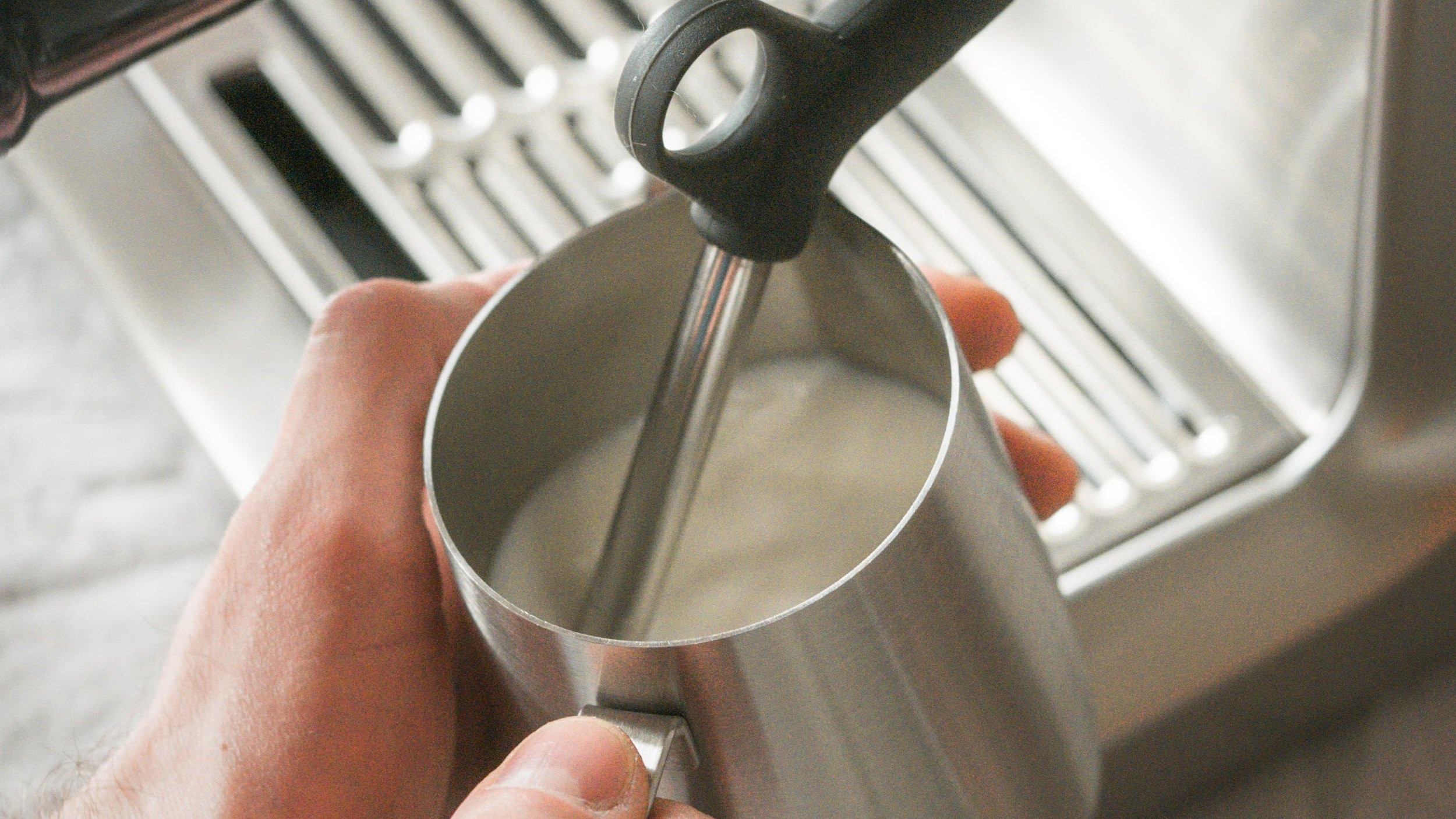Steaming milk at home may seem like a daunting task, but with a few key techniques, it becomes a satisfying and enjoyable part of making your favorite coffee drinks. Whether you're after a creamy latte, a frothy cappuccino, or a strong macchiato, mastering milk steaming is essential. The Breville Barista Express is an excellent tool for achieving professional-grade steamed milk in the comfort of your kitchen. This step-by-step guide will help you get started and perfect your milk-steaming skills. Discover the advanced features and performance of this machine in our Breville Dual Boiler BES920XL review
Why Steamed Milk is Essential for Great Coffee
Steamed milk does more than just create foam; it elevates your coffee experience. The process of steaming milk introduces microfoam—tiny bubbles that create a smooth, velvety texture. This not only enhances the flavor and texture but also balances the rich, bold espresso, resulting in a luxurious, creamy drink. Learn about the ease of use and innovation in our Breville Barista Touch Impress review
Getting Your Breville Barista Express Ready for Steaming
The Breville Barista Express (also known as the Sage Barista Express in the UK) is a favorite among home baristas due to its versatility and ease of use. With its efficient steam wand, the Breville makes it simple to achieve café-quality results at home with just a little practice. Compare these two popular models in our Breville Barista Express Impress vs Pro review

Tools Needed for Steaming Milk
Before you start, ensure you have the following essentials ready:
- Breville Barista Express with steam wand
- Cold milk (whole milk for creaminess, or barista-style oat/almond milk for plant-based options)
- Stainless steel milk jug (helps control the temperature)
- Optional thermometer (for monitoring milk temperature)
Step 1: Prepare Your Machine
First, ensure your Breville Barista Express is fully heated. Wait for the steam function light to indicate readiness, but for best results, let the machine sit for an additional minute to allow the steam to reach the optimal temperature.
Next, purge the steam wand. Turn the steam dial for a few seconds to release any water that may have condensed inside. This step ensures you get pure steam for the milk. Find out which machine suits you better in our Breville Barista Pro vs Express review
Step 2: Prepare Your Milk
Fill your milk jug about one-third full with cold milk. Using cold milk gives you more time to work on the texture before it overheats. While whole milk creates the creamiest foam, if you’re using plant-based alternatives, opt for a barista-style version that froths more effectively.
Step 3: Positioning the Steam Wand
Proper positioning of the steam wand is crucial for creating the perfect texture. Place the wand just below the surface of the milk, angled at approximately 15-20 degrees. This angle helps create a whirlpool effect, breaking larger bubbles into fine microfoam.
Slightly tilt the jug and position the wand close to the jug’s edge. This ensures a consistent vortex, allowing for even heating and foam integration throughout the milk. Explore the key differences between these premium machines in our Breville Oracle vs Oracle Touch review
Step 4: Steaming Your Milk
Turn on the steam knob and listen for a soft hissing noise—this is the sound of air being introduced into the milk during the "stretching" phase. Keep the wand tip just beneath the surface to avoid splashing as you incorporate air.
After 5-10 seconds, lower the jug to fully submerge the steam wand. This starts the "texturing" phase, where the milk heats and the foam integrates. Let the milk continue to swirl to ensure a glossy, silky microfoam.
The entire process should take about 20-30 seconds. If you're using a thermometer, aim for a temperature of around 150°F (65°C). If you're gauging by touch, stop steaming when the jug becomes too hot to hold comfortably.
Step 5: Clean the Steam Wand and Perfect the Texture
Once your milk reaches the desired texture and temperature, turn off the steam and wipe the steam wand clean with a damp cloth. Purge the wand again to remove any remaining milk.
To finish, tap the milk jug on the counter to break up any large bubbles, and swirl it gently to mix the milk. You should see a shiny, silky appearance—this is your signal that the microfoam is ready.
Step 6: Pouring Steamed Milk into Your Coffee
The way you pour your steamed milk is essential for both presentation and the drink's balance. Begin with a slow and controlled pour, keeping the jug close to the surface of the espresso to mix the milk evenly. As you get closer to filling the cup, raise the jug slightly and pour more quickly to create a final layer of foam. With enough practice, you can even experiment with latte art to add a creative touch to your drink.
Common Issues and Solutions
Steaming milk is a skill that improves over time. Here are a few common challenges you might face and how to address them:
Milk Not Frothing Well: Make sure you’re using cold, whole milk or barista-grade alternatives. Also, keep the wand tip just below the surface to introduce the right amount of air.
Large Bubbles in the Foam: Avoid over-aerating the milk by keeping the steam wand just under the surface without splashing.
Overheated Milk: Use a thermometer or stop steaming when the jug feels too hot to touch comfortably.

Conclusion
Learning how to steam milk on the Breville Barista Express is a rewarding skill that takes time and practice. With attention to air incorporation and temperature control, you'll be able to create silky, luxurious microfoam for café-quality drinks right at home. Enjoy the journey of learning, and soon you'll be crafting the perfect coffee beverages from the comfort of your kitchen. Happy steaming!
